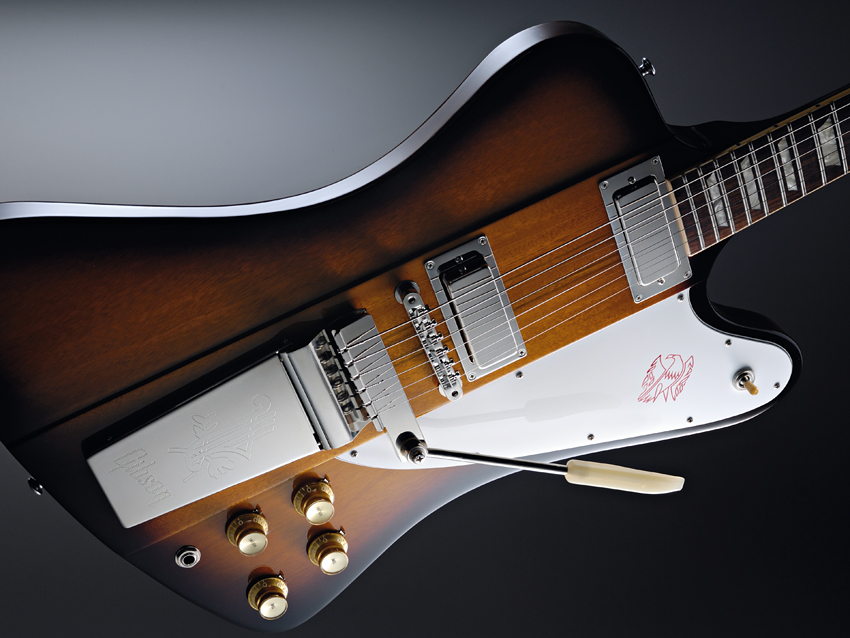IN PRAISE OF: The Gibson Firebird V

The announcement of the Gibson Firebird X was a masterclass in cage rattling. For many, Gibson's first mistake was calling it a Firebird, given the heritage attached to that name.
You see, since its launch in 1963, the classic Firebird V has secured its status as a bona fide blues and rock 'n' roll icon. And that didn't happen by accident: sketched out by car designer Ray Dietrich, the Firebird was the first guitar Gibson set out to market as definitively 'cool' - an adjective not often used in the same sentence as the Firebird X.
The beauty of the classic Firebird V is more than skin deep, though. The guitar of choice of blues legend Johnny Winter, plus rockers such as the late Steve Clark of Def Leppard and Foo Fighters' Dave Grohl and Chris Shiflett, is as famous for its punchy tone and impressive sustain as for its rock 'n' roll aesthetics.
The Firebird was the first Gibson guitar to feature a sustain-boosting neck-thru-body construction. Its neck and central body section are shaped from a nine-piece laminate of mahogany and walnut, with a pair of mahogany wings spliced on to complete the body. The wings are thinner than the centre core, which gives the Firebird V its distinctive 'stepped' profile.
The Firebird was originally offered in single, double and triple mini humbucker-equipped formats. In a bold move, Dietrich designed his classic with a 'reverse' body shape, which, in contrast to a Fender Stratocaster, featured the longer of the guitar's wings on the treble side. In a further poke to the ribs of design convention, that Firebird came fitted with chunky banjo machineheads.
Like other innovative Gibson guitars of the '50s and '60s (the Flying V and Explorer), the Firebird V wasn't a runaway success during its original run. It was replaced by the equally low-selling non-reverse model after just two years in production.
These days, you'll find reverse and non-reverse Firebirds in the Gibson catalogue. Aside from a few hardware tweaks, the Firebird V 2010 is nigh on identical to the original '63 model. You see, it was always a brilliant guitar; it just took a while for us to figure that out.
Get the MusicRadar Newsletter
Want all the hottest music and gear news, reviews, deals, features and more, direct to your inbox? Sign up here.
Maybe we'll say that about the Firebird X in 50 years' time…
Firebird V Timeline
1963: Gibson unveils the reverse-body Firebird range
1965: The non-reverse Firebird design is launched
1972: The reverse Firebird model is reborn, Phoenix-style
2010: The banjo tuners are replaced by gearless Steinberger units
2011: Gibson releases the self-tuning, effect-loaded Firebird X to much controversy
“Its mission is simple: unleash the power of any amplifier or line-level source without compromise”: Two Notes promises a “watershed” in tube amp control with the Torpedo Reload II
MusicRadar deals of the week: Enjoy a mind-blowing $600 off a full-fat Gibson Les Paul, £500 off Kirk Hammett's Epiphone Greeny, and so much more











